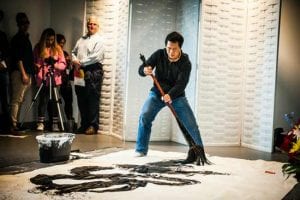
Peter Ng performs at the Pao Arts Center grand opening. Photo by Steven Sulweski Photography, courtesy of Boston Chinatown Neighborhood Center
“But the conquest of the physical world is not man’s only duty. He is also enjoined to conquer the great wilderness of himself. The precise role of the artist, then, is to illuminate that darkness, blaze roads through that vast forest, so that we will not, in all our doing, lose sight of its purpose, which is, after all, to make the world a more human dwelling place.” —James Baldwin
ArtPlace America (ArtPlace) is a 10-year consortium of a number of foundations, federal agencies, and financial institutions that works to position arts and culture as a core sector of comprehensive community planning and development. It largely focuses its efforts around “creative placemaking,” which describes projects in which art plays an intentional and integrated role in place-based community planning and development. This brings artists, arts organizations, and artistic activity into the suite of placemaking strategies pioneered by Jane Jacobs and her colleagues, who believed that community development must be locally informed, human-centric, and holistic. In practice, this means representing arts and culture alongside sectors like housing, transportation, public safety, and others—with each sector recognized as part of any healthy community; as requiring planning and investment from its community; and as having a responsibility to contribute to its community’s overall future.
Since 2015, ArtPlace has worked with independent researchers to investigate the intersection of arts and culture with various subfields of community development. In 2017, it commissioned Tasha Golden, Ph.D. candidate at the University of Louisville School of Public Health and Information Sciences, to conduct research at the intersection of the arts and public health. The goal of this research was to better understand and articulate how arts and culture can help provide solutions to public health challenges that communities—particularly low-income, immigrant, rural, indigenous, and communities of color—are facing across the United States.
Based on an analysis of dozens of projects, a literature review, and input from both arts and public health‒sector leaders, Golden identified several domains where arts and cultural strategies are helping drive change in community health outcomes, or to the systems in which public health practitioners operate. Among these domains, what quickly stood out was the impact of creative placemaking on mental health—including stigma; trauma; community-level stress, depression, and substance use disorders; and cultural identity. Here we have taken these four categories as a frame, describing their relevance to public health and providing examples of initiatives that address them. Our findings suggest that infusing community development with creativity and collaboration stimulates the potential for unique mental health benefits that warrant continued investment and exploration.
Arts and Culture Can Reduce Stigma:
One of the Fundamental Barriers to Mental Health
“When a vast, stifling denial in the public realm is felt by every individual yet there is no language, no depiction, of what is being denied, it becomes for each his or her own anxious predicament, a daily struggle to act ‘as if’ everything were normal.” —Adrienne Rich
Stigma is a priority issue in public health and health promotion, because it creates powerful obstacles to health care access and to protective factors, such as education and social connection. For example, when a condition or experience is not “talk-about-able,” prevention and treatment information can become difficult or impossible to circulate. Stigma can also lead individuals to conceal conditions or experiences by avoiding treatment and isolating themselves—which generates additional significant health consequences.
And because stigma silences many issues and groups, it limits public health’s understanding of a given community and its health. When inadequate knowledge influences local service, resource, and funding decisions, the result may be the perpetuation of health challenges and inequities.
Fortunately, arts and culture have a long history of cultivating spaces for the portrayal and discussion of challenging and stigmatized aspects of life experience. Artists, installations, and performances often take communicative risks that model or stimulate expression, action, and new norms. This can shift participants’ and viewers’ sense of being alone, or of being unable to articulate or share their experience.

Cast sculptures lining the coast of Alaska as part of the 100 Stone Project. Photo by Affinity Films, courtesy of Sarah Davies
This effect is evident in the 100 Stone Project in Alaska: a statewide initiative designed to raise suicide awareness. Founding artist Sarah Davies connected with 100 of the state’s “most vulnerable community members,” inviting them to depict their “stories of illness, trauma, grief, disability, difficult transitions, and struggle” in physical form—perhaps kneeling, reaching, arms outstretched or tight around them—while artists cast them in plaster. This approach allowed residents to share their felt experience without words, which can often feel out of reach; it also generated visible representations of pain that is often unspoken and invisible.
After masks and burlap “clothing” were added, the figural sculptures were installed on the beach of Point Woronzof in Anchorage, Alaska—many seeming to walk or disappear into the icy waters. These haunting, personal images illustrate the potential dire consequences of physical and emotional vulnerabilities, particularly among isolated or marginalized communities. In addition to declaring the need for awareness and action, the deeply collaborative nature of 100 Stone—which involved 30 communities and over 600 volunteers, artists, and allies—also cultivated community, creativity, and resilience.
The Porch Light Initiative in Philadelphia has brought stigmatized issues into the open in communities facing mental health risks due to “neighborhood disorder and decay” and other place-based risk factors. In a collaboration between Philadelphia Mural Arts and the city’s Department of Behavioral Health and Intellectual disAbility Services, community members work with artists on public murals that depict experiences with mental illness. A 2015 Yale University study found that the initiative had not only successfully reduced mental health stigma among residents, but it also increased social cohesion and trust, and decreased the rate at which participants used secrecy to avoid stigmatization.
Arts and Culture Can Help Address Trauma
“I have come to believe over and over again that what is most important to me must be spoken, made verbal and shared…” —Audre Lorde
“There is no greater agony than bearing an untold story inside you.” —Maya Angelou
In addition to emphasizing stigma reduction, the public health sector is working to better understand trauma and adverse experiences—which have a staggering impact on both individuals and communities. Not only have over 70 percent of individuals experienced at least one type of trauma but communities can also experience trauma as a whole—resulting from conflict, natural disasters, systemic oppression, the destruction of cultural practices, or “emotional and psychological wounds…carried across generations.” Adding complexity to trauma research, adverse childhood experiences (ACEs)—poverty, sexual abuse, witnessing or experiencing violence, parental separation, parental incarceration, etc.—have been called “the nation’s most basic public health problem” due both to their ubiquity and their strong links to significant health concerns, such as heart disease, obesity, and substance use disorders.
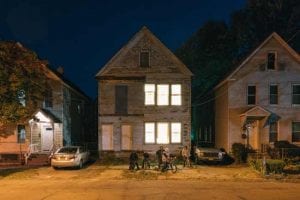
One of the 200 vacant buildings in Albany, Schenectady, and Troy, New York, that were installed with an illuminated breathing effect for Breathing Lights, 2016. Photo by Hyers + Mebane, courtesy of Adam Frelin and Barbara Nelson
Clearly, addressing trauma and ACEs at the community level will require innovative, multi-sector responses; many approaches to date have been initiated and enhanced through arts and culture. For example, the Breathing Lights project focuses on the combined community traumas of disinvestment and disrepair. Artists illuminated the windows of hundreds of vacant buildings in Albany, Schenectady, and Troy, New York, with warm, gently pulsing light—mimicking human breathing. The idea was to infuse warmth and life into buildings that otherwise represented hopelessness, and to re-present them as livable spaces. These installations then amplified other aspects of the initiative, including “Building Reclamation Clinics” (to teach residents how to acquire vacant homes), policy roundtables (to address urban blight), and a multi-city learning exchange. Since Breathing Lights’ beginning in 2016, 18 percent of the installation-homes have been sold, local land banks have reported increased interest in buying or renovating buildings, and more regional leaders have committed to addressing neglect and disinvestment.
The One Poem at a Time project in the Smoketown neighborhood of Louisville, Kentucky, addressed community trauma by challenging the negative messages and images presented to residents in daily life. Developed in 2017 by poet Hannah Drake of the Louisville-based arts agency IDEAS xLab, the initiative replaced dozens of negative and predatory advertisements on local billboards with positive photographs of Smoketown residents, combined with empowered, six-word poems written by community members. Residents then used the public nature of this initiative, and the civic engagement it generated, to advocate for policies preventing future predatory advertising in Smoketown.
Lastly, Broadway Housing Communities in upper Manhattan tackles trauma and ACEs on multiple levels through the incorporation of the arts into their developments. Their recent project in Sugar Hill offers affordable housing in a striking, mixed-use building designed by world-renowned architect David Adjaye; it brings to residents the health benefits of pleasing aesthetics and shifts the social imagination regarding supportive housing for low-income and formerly homeless residents.
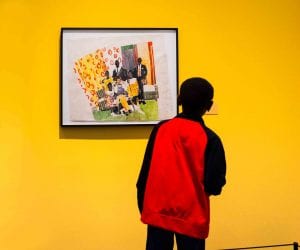
A young museum goer visits Broadway Housing Communities. Photo by Michael Palma
The project also hosts the Sugar Hill Children’s Museum of Art & Storytelling on the ground floor, designed to provide a stimulating space for families to share in cultural programming and to meet the educational needs of the community’s youngest children. The museum’s emphasis on storytelling may help reduce trauma symptoms by supporting participants in the narration and reorganization of their experiences: a process linked to increased self-efficacy, self-esteem, and health benefits ranging from improved immune function to better grades. In addition, the museum’s contributions to family connection, personal expression, and exploration nurture protective factors that can reduce ACEs and their impacts.
Arts and Culture Can Help Address Specific Community Mental Health Concerns
In addition to trauma, the public health sector is responding to pervasive mental health concerns, such as stress, depression, and substance use disorders. Each year, Americans report feeling more stressed, primarily from chronic sources, such as money, work, family responsibilities, health concerns, and the economy. And although chronic stress is quite common, it is also dangerous—increasing the risk of health problems, ranging from heart disease and chronic pain to severe anxiety and depression. Meanwhile, depression was declared the leading cause of disability worldwide —resulting, at its worst, in suicide, which is currently the “second leading cause of death in 15‒29-year-olds.” Finally, addiction and substance use disorders present significant public health concerns due to their costs, multiple long-term effects, and increasing prevalence. Risk factors for stress, depression, and substance use disorders include poverty, community violence, and lack of health care access—indicating the extent to which these issues are affected by place. An increasing public recognition of the importance of mental health in community well-being has led to calls for improved education, dialogue, and access to therapeutic options, which many creative placemaking projects have provided.
For example, Urban Voices on Skid Row in Los Angeles is a choral project designed for “individuals disenfranchised by homelessness, mental health issues, and unemployment.” Although its public performances challenge stigma related to homelessness, the project’s primary goal is to provide the direct mental and physical benefits that are linked to choral singing—including reduced stress and muscle tension, improved mood, and positive social connection. Similarly, the program organizer for the Mural Arts Project in New York took an explicit arts therapy view. Her goal was not only to reduce social isolation resulting from depression and stigma, but to benefit participants immediately through the healing process of artmaking itself.
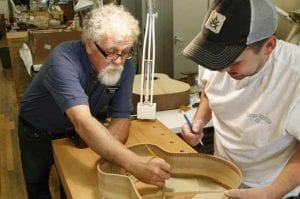
Participants in the Culture of Recovery project build handcrafted instruments as part of an education and workforce program focused on traditional craft and music. Photo by Appalachian Artisan Center of Kentucky Inc.
Finally, the Appalachian Artisan Center has launched its Culture of Recovery project in Knott County, Kentucky, which currently ranks fifth nationwide for opioid hospitalizations. A collaboration with the nearby Hickory Hill Recovery Center, Knott County Drug Court, and Eastern Kentucky Certified Employment Program, the project uses arts engagement as a holistic approach to recovery—with activities including painting, journal-making, songwriting, luthiery, ceramics, and blacksmithing. The initiative was rooted in “evidence that building connections and expression through art can give a struggling individual a sense of purpose, direction, and achievement.” By combining this therapeutic-arts approach with social connections and organizational partners, Culture of Recovery positions itself to generate local cultural shifts and community-level health outcomes.
Arts and Culture Can Nurture Cultural Identity and Social Connection
The final category of mental health in which creative placemaking appears particularly promising is cultural identity—understood as a sense of self and of social connection grounded in a shared culture and history. Positive cultural identity has been shown to “protect against mental health symptoms and buffer distress prompted by discrimination,” particularly among populations that have historically been marginalized or oppressed. Because of this linkage, the nurturing and sustainment of cultural identity is a critical aspect of public health and community development efforts.
Many creative placemaking projects have pursued this work via built-environment initiatives. For example, the Boston Chinatown Neighborhood Center is building an arts-based center to preserve cultural assets and cultivate connections among Chinatown residents. This is particularly vital during a time of community uncertainty due to market pressures and the accompanying potential for residential and cultural displacement.
The Heritage Arts Trail in Santo Domingo Pueblo, New Mexico, has sought to increase economic opportunity by integrating traditional native cultural identity into infrastructure and transportation plans. A large percentage of the Pueblo’s residents are artists, but they lacked spaces to display and sell their work. And despite being 1.5 miles from a rail line that provides access to urban centers and economic opportunities, the Pueblo lacked pedestrian access to the station. So in 2014, plans were drawn up for a pedestrian trail that would include six artist nodes along the path for resting and lingering—and for artists to showcase traditional and contemporary art. By incorporating these nodes, the trail enhances future growth opportunities by linking them to the Pueblo’s tradition of arts, craftsmanship, and entrepreneurship.
In Wisconsin, the Menominee Nation is addressing low graduate rates, high ACE scores, and historical trauma by increasingly incorporating positive cultural identity into trauma-informed education. For example, a middle school science teacher combines class units about the planting process with traditional Menominee stories, to teach students the historic, cultural connections between them, their ancestors, and the earth. Educators hope these connections help sustain students’ interest in education while cultivating a sense of purpose and belonging. The singular capacity for creative placemaking projects to nurture positive cultural identity confirms the value of research and investment at the intersections of community development, public health, and the arts.
Next Steps: Exploration and Field-Building
“I don’t believe any longer that we can afford to say that it is entirely out of our hands. We made the world we are living in and we have to make it over.” —James Baldwin
To that end, we offer in closing some recommendations and opportunities for continued exploration. First, although the four mental health categories we highlighted often incorporate distinct goals and outcomes, they are deeply and intuitively connected—not only to one another, but to numerous public health priorities. This is a reflection both of the complexity and expressivity of the arts and of the holistic, social-ecological nature of health. The resulting “confounding factors” can present difficulties for researchers—leaving cause and effect frustratingly out of reach. However, to us they also signal the profound potential of arts-based initiatives to help us learn and benefit from the inevitable overlap of lived experience with lived experience.
In an effort to both deepen and promote cross-disciplinary approaches to community well-being, and to build on the initial research excerpted here, ArtPlace recently launched Creating Healthy Communities: Arts + Public Health in America in partnership with the University of Florida Center for Arts in Medicine. The two-year national research initiative is designed to accelerate the collaboration of arts, public health, and community development practitioners seeking to build healthy communities in alignment with national public health goals. Readers are encouraged to join and follow this initiative, contributing your vision and experience to a growing field. Meanwhile, it is our hope that the work described here ignites our collective imagination, stimulating the curiosity and creativity that fuel innovation, social progress, and equitable approaches to community-based work. The infusion of community development practice with arts and culture may help reintegrate us as individuals, community members, health care consumers, and contributors to a diverse and dynamic polity.
A version of this article originally appeared on the Federal Reserve Bank of San Francisco’s Community Development Innovation Review.

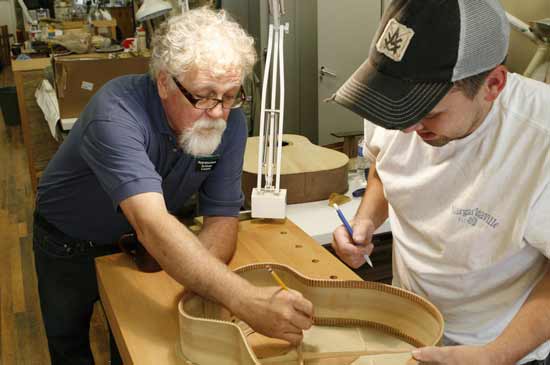

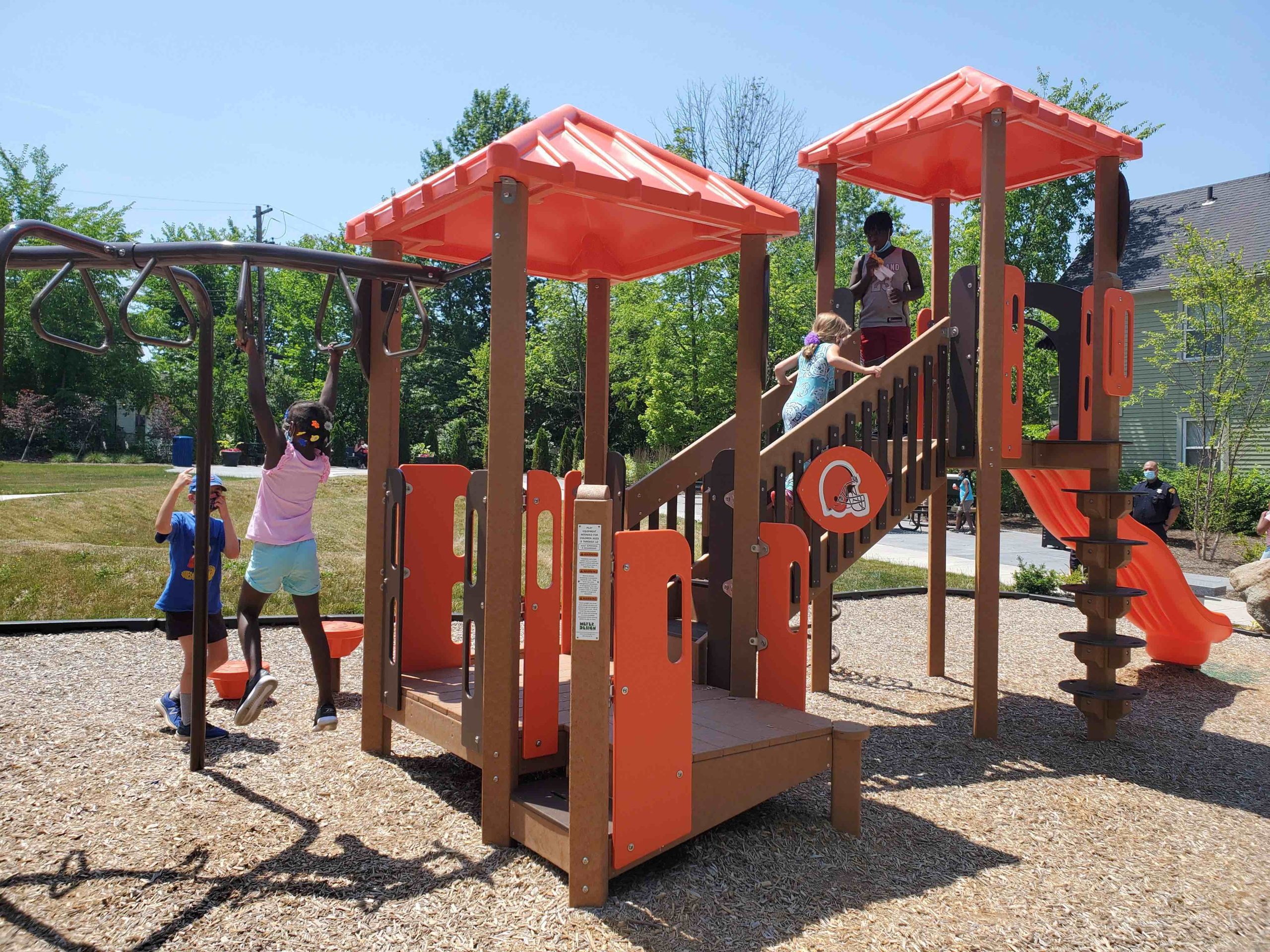
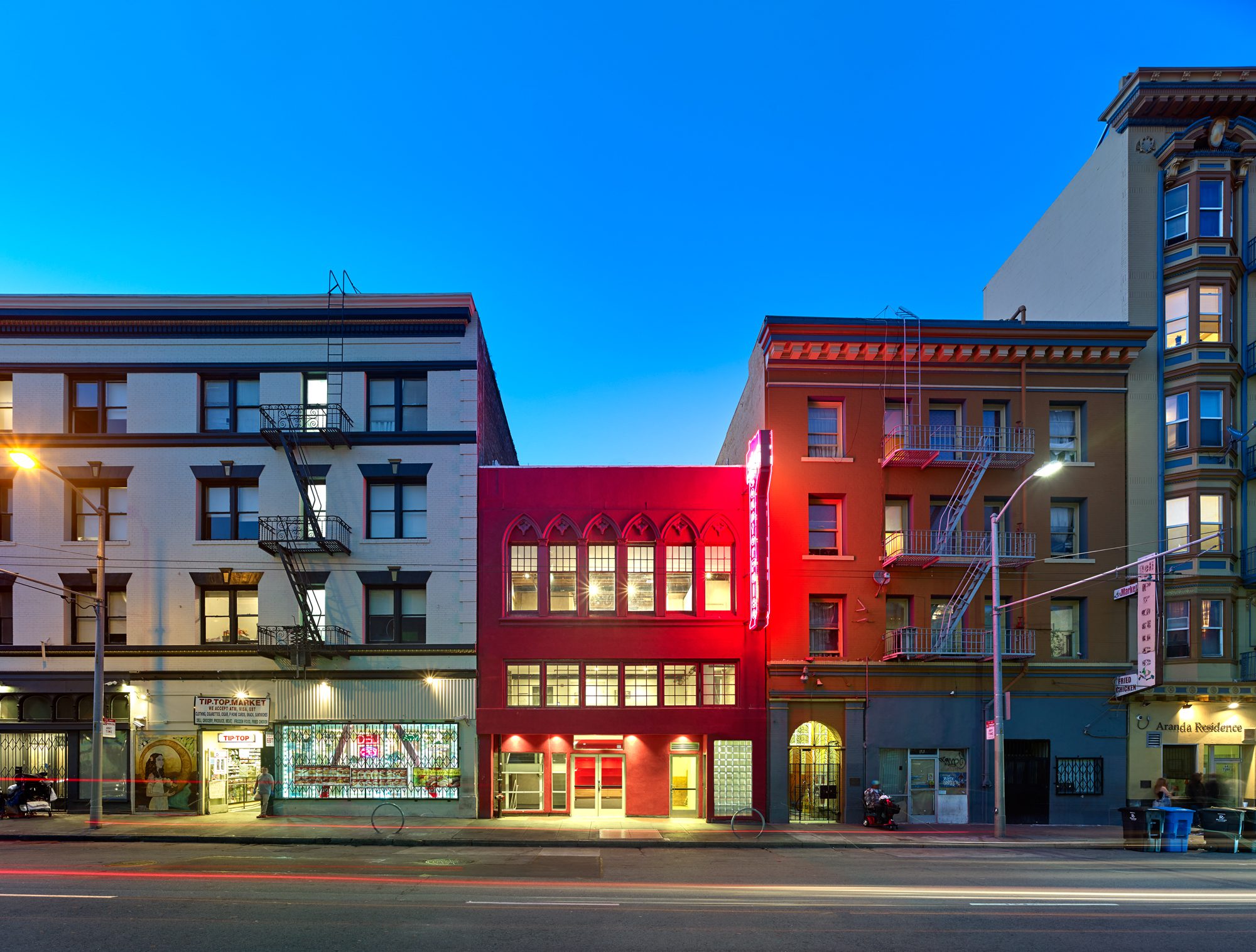
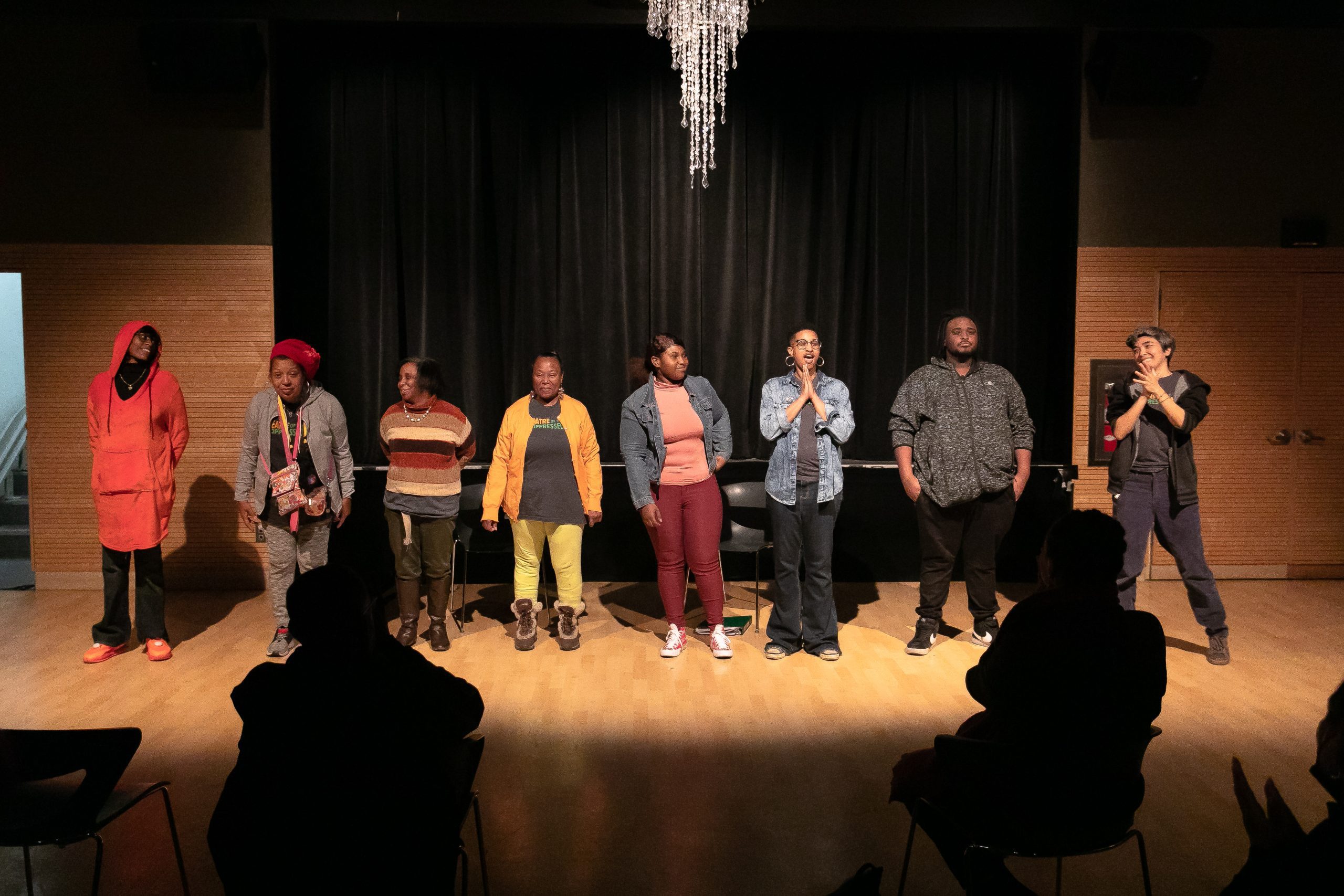
Comments